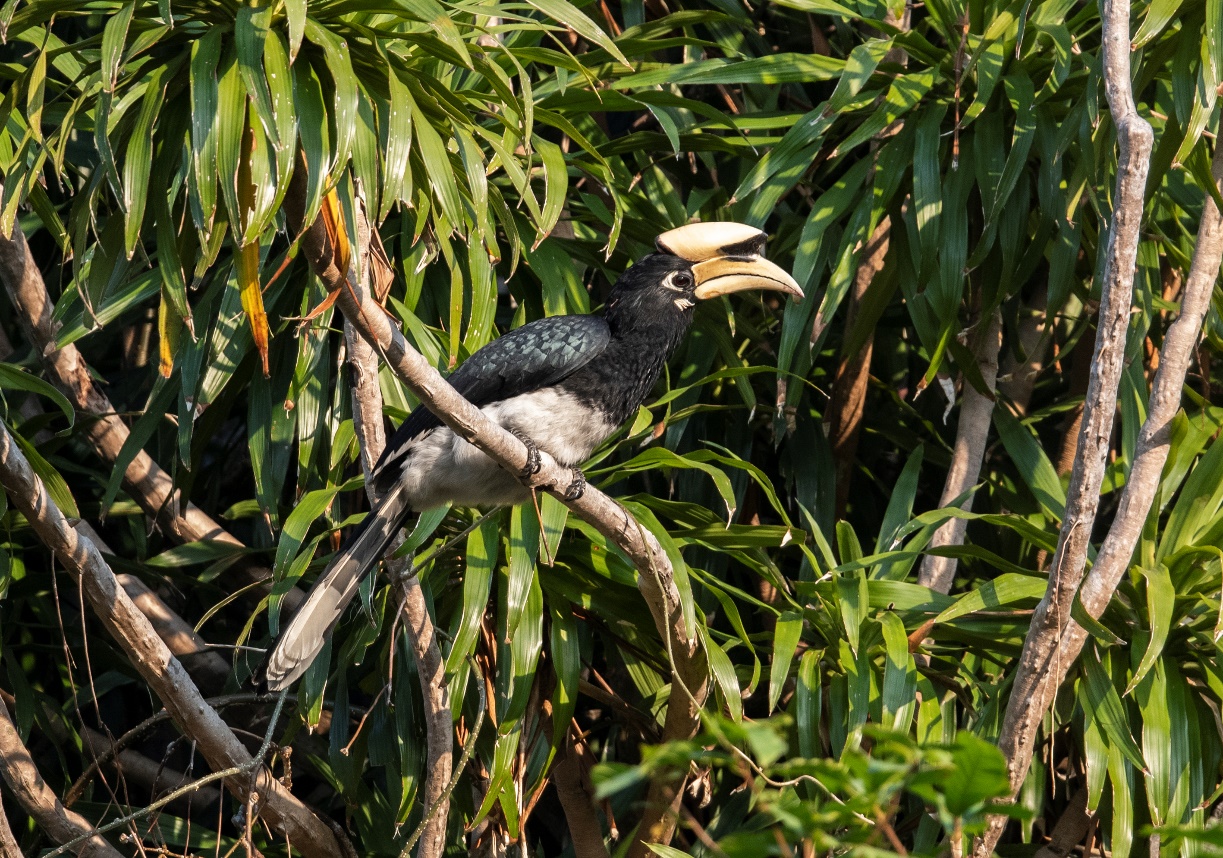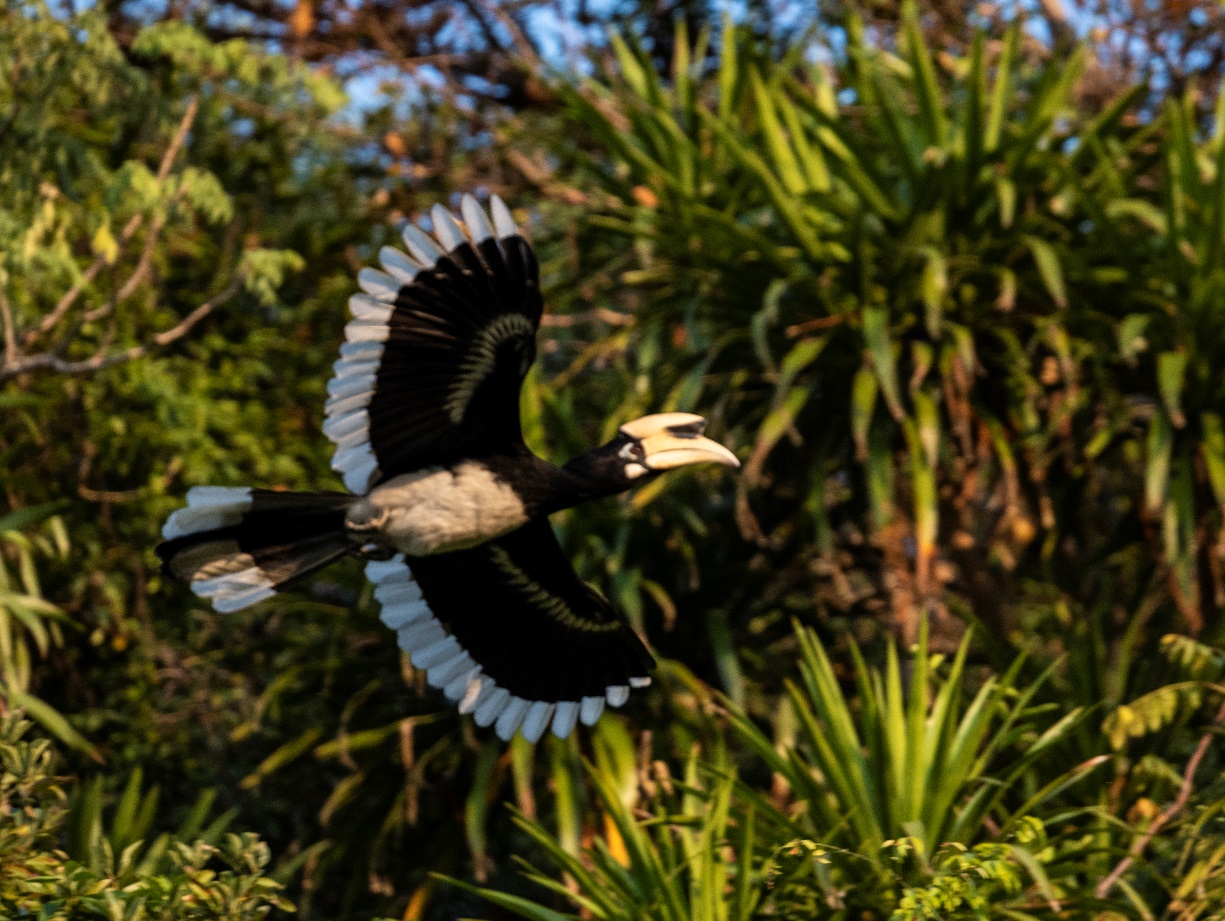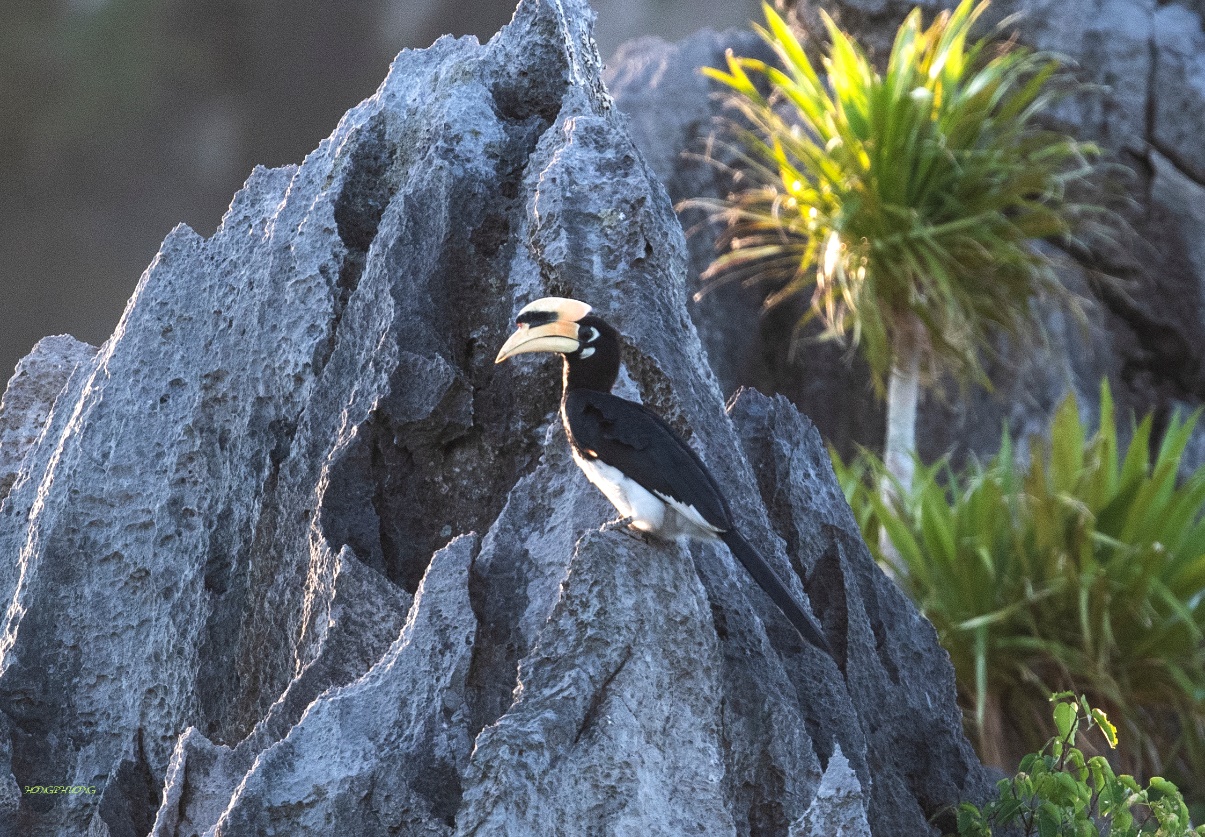Rare Oriental Pied Hornbill recorded in Bai Tu Long National Park
02/01/2025The Oriental Pied Hornbill, scientifically named Anthracoceros albirostris (Shaw & Nodder, 1807) belongs to the family Bucerotidae within the order Bucerotiformes.

Anthracoceros albirostris.
The Oriental Pied Hornbill is a relatively large bird with a body length ranging from 68 to 70 cm. Its plumage of the lower chest, throat, under-tail coverts, tips of the outer tail feathers, wing margins, the bases, and tips of primary feathers is black while the two outermost and tips of secondary feathers are white.
The beak has a dual-tier structure, predominantly pale yellow, with black markings between the tiers and at the tip of the upper casque. As the bird matures, the upper casque becomes taller and longer. The bird has patches of bare skin on either side of its throat, reddish-brown eyes, and skin around the eyes varying from pale blue to reddish-blue. The throat features a purplish-blue patch of bare skin.

Anthracoceros albirostris.
The Oriental Pied Hornbill inhabits diverse ecosystems, including evergreen forests, mixed deciduous forests, secondary forests, island woodlands, and occasionally regenerating forests, where it is often observed feeding on fruit-bearing trees. Its primary diet consists of various fruits, but it has also been observed eating insects, reptiles, and amphibians. This species plays a vital role in seed dispersal, contributing to forest protection and regeneration.

Anthracoceros albirostris.
The breeding season of the Oriental Pied Hornbill spans from January to June. During this period, they select large, elevated tree cavities for nesting and typically lay 1-3 eggs. The male undertakes the unique task of sealing the nest entrance with a mixture of clay and other materials, leaving a small aperture through which he provides food to the female and the chicks throughout the incubation and rearing period. Once the chicks are sufficiently mature, the male breaks the seal using his beak, enabling the female and young to exit the nest and venture into their environment.
Globally, the species is distributed across Myanmar, Thailand, Indochina, and southern China. In Vietnam, this species is found in dense forests nationwide, with a higher prevalence in southern regions.

Anthracoceros albirostris.
In November 2024, researchers of the Institute of Tropical Ecology/Vietnam-Russia Tropical Center, conducted a biodiversity survey of the bird species at Bai Tu Long National Park and recorded a flock of 5 Oriental Pied Hornbills feeding in the evergreen forest on limestone mountains within the core area of the Park. According to interviews with local residents and the Park rangers, other flocks of this species, with larger numbers, are also present in the area.
Currently, the population of the species is experiencing a significant decline due to illegal hunting, habitat loss, and food scarcity. This species is classified as rare and endangered in the forest flora and fauna list, under Category IIB, as specified by Decree No. 84/2021/ND-CP, dated September 22, 2021, of the Government of Vietnam.
The identification of the Oriental Pied Hornbill population at Bai Tu Long National Park represents a significant positive signal. However, it also underscores critical concerns regarding effective management and conservation strategies, as well as the need for the implementation of stringent protective measures. These actions must align with Directive No. 04/CT-TTg, issued by the Prime Minister of Vietnam on May 17, 2022, which outlines urgent tasks and solutions for the conservation of wild and migratory birds in Vietnam, with particular emphasis on safeguarding biodiversity within Bai Tu Long National Park.
Source: Pham Hong Phuong (Institute of Tropical Ecology)
Ngoc Nguyen translated









